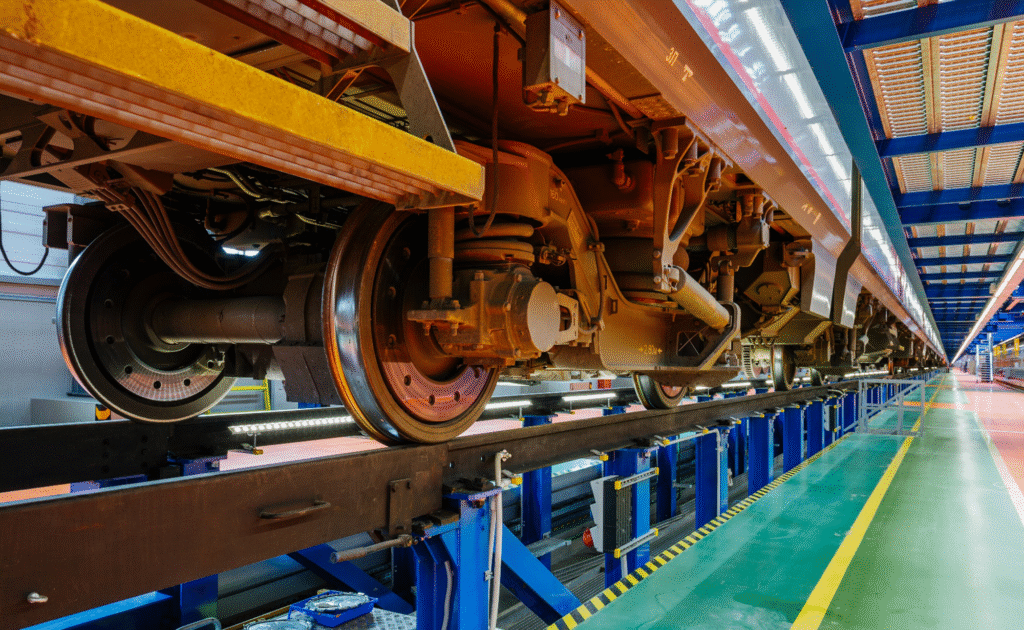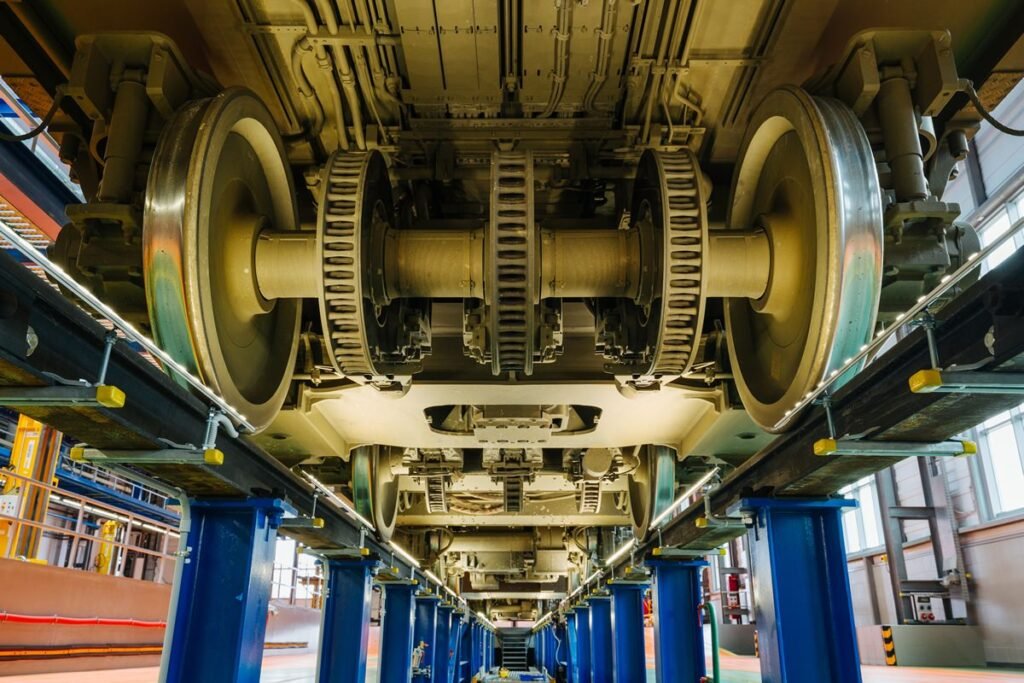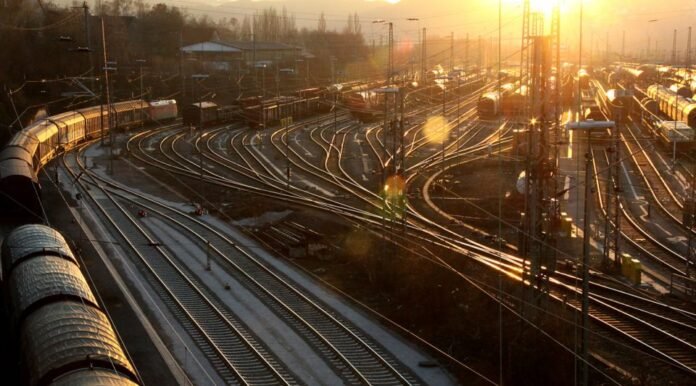Abstract
The world is experiencing a paradigm shift towards digitalisation, which is enabling more efficient and intelligent use of infrastructure. Across industries, digital transformation is being embraced to enhance operational speed and accuracy, optimise production and service delivery processes, and improve decision-making through real-time data tracking. This digital momentum is also facilitating the identification of emerging trends, supporting the development and launch of new products, and enabling businesses to expand their service offerings. The integration of digitalisation within the transport sector is helping to read and predict the traffic trends and make strategic approaches to manage the passenger flow across various transport modes, including bus, metro. In addition, it empowers the passengers to plan their journey accordingly by providing them with real-time data. Today, digitalisation is acting as the foundation stone for the establishment of smart cities, where everything is connected.
To develop an optimised model for passenger transportation modes, a transport operator must integrate a diverse set of data, including passenger demographics, residential and workplace locations, secondary travel patterns, transportation costs, and other contextual factors. By integrating real-time fare data, GPS tracking, weather conditions, and workforce productivity metrics, it becomes possible to predict demand and identify high-traffic routes with greater accuracy.
The rail transport sector is progressively adopting digitalisation to enhance operational efficiency, increase service frequency, and improve asset management. By integrating technologies such as Internet of Things (IoT) devices, automated signalling, and real-time monitoring systems, railway operators are generating large volumes of operational and maintenance data. This data is used for condition-based and predictive maintenance, allowing for early detection of potential failures and more effective resource planning.
Digitalisation involves converting processes, operations, and records into digital formats. As organisations digitise their workflows through IoT sensors, automated systems, smart devices, online platforms, etc., they continuously generate large volumes of structured and unstructured data. This data forms the raw material of big data.
This study explores the role of big data in developing smart infrastructure for urban transport systems, with a particular focus on the rail transport sector. This article outlines an approach to strategic decision-making in rail transportation systems using big data insights.

Introduction of Big Data in the Context of Railways
In the rail transport sector, big data refers to the large-scale collection, processing, and analysis of data generated across various operational, infrastructural, and passenger-related systems. This data comes from diverse sources such as signalling equipment, GPS-enabled locomotives, automated fare collection (AFC) systems, rolling stock sensors, maintenance records, ticketing platforms, surveillance systems, and passenger feedback mechanisms. With the integration of modern technologies like AI and machine learning, this data can be analysed and utilised in various ways, including predictive maintenance, managing passenger flow during peak hours and increasing the operational frequency.

Stages of Big Data Analysis

Example of Railway Big Data (Track Data)
Need for Big Data in Creating Smart Rail Ecosystem
As cities continue to develop, they attract increasing numbers of people drawn by factors such as employment opportunities, safety, and an improved lifestyle. This rapid urban influx places pressure on existing infrastructure, much of which is unable to keep pace with the growing population.
India currently operates the fourth-largest railway network in the world and possesses the 3rd largest metro network. Despite this extensive infrastructure, the rail transport sector continues to face challenges in meeting rising demand.

Operational Frequency: Indian Railways is operating about 13,169 passenger trains daily, and still, it records approximately 5 crore (50 million) wait-listed passengers annually due to the unavailability of reserved berths, highlighting a substantial gap between capacity and demand. This gap can only be bridged with increased operational frequency of trains. With the help of big data, the busy routes can be identified, which can help the authorities to adopt a practical approach to accommodate the passengers.
Asset Monitoring: It is imperative to monitor the asset health to avoid sudden breakdowns and downtime, which can result in financial losses.
Technologies such as the Internet of Things (IoT) enable the collection of data from railway assets, including both wayside and onboard equipment, through the use of embedded sensors. The integration of big data analytics enables the processing and analysis of large volumes of data generated by sensors installed on railway infrastructure and rolling stock. Through this analysis, operators can identify operational patterns, detect anomalies, and make data-driven predictions regarding asset health and maintenance requirements.
Predictive Maintenance: Effective asset management is essential to addressing capacity constraints in rail operations. By using big data and machine learning, operators can continuously monitor and analyse patterns in asset performance. These technologies enable the detection of subtle changes in equipment behaviour, allowing for the early identification of wear or potential failures.
Optimise Resource Allocation: Data collected from Automated Fare Collection (AFC) systems, along with the analysis of ridership trends and station-level footfall, can support more effective resource allocation. This includes optimising staff deployment, planning train compositions based on demand, and managing energy consumption more efficiently across the network.
Future Model: Historical data collected over the years can reveal patterns of annual growth in ridership and operational demand. These insights can be used to inform strategic planning and guide the development of future models for addressing current inadequacies in capacity, infrastructure, and service delivery. Long-term data trends enable more accurate forecasting, fund allocation, and infrastructure scaling.

Limitations of Big Data in Rail Transport
Non-Homogeneous Dataset
Track monitoring systems generate multiple data streams, including rail defect measurements, track geometry parameters, and cumulative tonnage data. However, these datasets are often non-homogeneous and differ in structure, temporal resolution, sampling frequency, and measurement units.
For instance, rail defect data may be event-based, geometry data may be recorded at fixed spatial intervals, and tonnage data may be aggregated over time. In some analyses, simplified metrics such as defect frequency are used without incorporating the actual severity or spatial correlation of defects, which can compromise analytical accuracy.
This heterogeneity creates challenges for integrated data analysis, particularly when investigating interdependencies between rail defects and geometry anomalies. To enable meaningful, interactive analytics, it is essential to develop data transformation and fusion algorithms capable of:
- Temporal and spatial alignment of asynchronous datasets.
- Normalisation of heterogeneous variables to a common scale.
Inconsistency and Incompleteness in Data Collection
Data collected in railway systems, particularly through methods such as video-based inspections, often contains uncertainty, missing values, and measurement errors. These issues are further compounded when data is aggregated from various spatial and geographical locations across the network. The integration of such data to derive generalised insights about track conditions introduces challenges due to variability in data sources, formats, and quality.
To enable a more holistic and accurate analysis, it is essential to develop methodologies capable of handling both quantitative (objective) and qualitative (subjective) information. This includes:
- Data imputation techniques to handle missing values.
- Hybrid models that integrate sensor data with human observations.
Merging Heterogeneous Datasets
Big Data analytics in the railway domain extends beyond the management of large-scale datasets. It fundamentally involves the integration of heterogeneous data sources to enable more insightful and actionable analysis. A critical challenge lies in the effective merging of disparate datasets such as ballast condition data, track geometry measurements, tonnage records, and rail defect logs, each of which varies in structure, sampling frequency, resolution, and storage format.
For instance, correlating ballast degradation with track geometry irregularities requires a coherent spatial and temporal alignment of datasets that are typically captured through different inspection mechanisms and at different intervals. Similarly, integrating cumulative tonnage data with rail defect occurrences demands a reliable mapping between the load history and the defect manifestation timeline. To address these challenges, there is a need for a standardised data integration framework.
Privacy Concerns
As the rail transport sector transitions to digitalisation, privacy and cybersecurity emerge as critical challenges. The widespread deployment of digital technologies such as IoT sensors and electronic ticketing platforms introduces new vulnerabilities to unauthorised access, data breaches, and cyberattacks. Such intrusions could potentially disrupt train operations, compromise system integrity, and endanger passenger safety.
The adoption of electronic ticketing systems has improved service efficiency but also raised privacy concerns. The collection and storage of passenger information, including travel history, payment details, and location data, creates the potential for sensitive personal data to be linked across domains, including financial and even health-related information through behavioural inference. Without appropriate safeguards, this could lead to misuse or unintended exposure of personally identifiable information (PII).
Currently, privacy research in the rail domain remains limited, particularly concerning passenger data protection. Most existing literature addresses general big data challenges such as data capture, storage, transmission, and analysis, with few studies focusing on context-specific risks in public transportation systems.
To address these issues, it is essential to:
- Implement end-to-end encryption for all data flows.
- Establish privacy-by-design frameworks during system development.
- Comply with applicable data protection regulations such as the Digital Personal Data Protection Act (DPDP), 2023.
Compatibility with Existing Infrastructure
The effective application of big data analytics in the rail sector relies heavily on the integration of enabling technologies such as IoT (Internet of Things), Artificial Intelligence (AI), and Machine Learning (ML). However, most existing railway infrastructure, particularly in older or legacy systems, was not originally designed to support real-time data acquisition, sensor integration, or automated decision-making.
Retrofitting such infrastructure presents several challenges:
- Lack of standard interfaces and communication protocols in older equipment..
- High capital expenditure is required to upgrade or replace legacy components with smart systems.
- In addition to this, technological gaps persist, including limited in-house expertise to manage modern data pipelines.
Impact of Implementing Big Data in Railway Operations and Maintenance
Prediction of Equipment Failure: The railway assets, encompassing rolling stock, tracks, and various components, produce data in substantial volumes. By implementing big data analytics, railway operators can effectively predict and identify wear and tear, as well as deviations from standard operational parameters. This proactive approach enables the timely scheduling of repairs during non-operational hours, thereby minimising equipment failures and enhancing overall operational efficiency.
Real-Time Condition Monitoring: Big data platforms support real-time health monitoring of key assets (e.g., traction motors, wheelsets, pantographs, axle bearings, and signalling systems) using IoT sensors. In addition to this, Data streams are analysed on the fly to detect threshold breaches, trigger alarms, and dispatch maintenance teams before a failure escalates
Asset Lifecycle Optimisation: Big data helps track and evaluate the performance degradation patterns of railway components over time, which facilitates more precise estimations of their Remaining Useful Life (RUL).
Increased revenues: The application of big data analytics in rail transport enables authorities to refine pricing strategies, enhance freight scheduling, and streamline route planning. The authorities can use data to determine optimal train speeds and reduce transit times, and operators can lower energy consumption and fuel costs. Indian Railways, through the integration of these data-driven methodologies
Conclusion
The integration of big data analytics in rail transport is increasingly being recognised for its potential to enhance operational efficiency, asset reliability, and safety. Railway operators can forecast passenger demand, identify failure patterns in critical infrastructure, and improve timetable planning by analysing historical and real-time data. Data-driven insights also support dynamic resource allocation, optimise rolling stock utilisation, and enable predictive maintenance, which can reduce unplanned downtimes.
Despite these advantages, the adoption of big data systems poses structural and technical challenges. Existing legacy infrastructure in India lacks the interoperability required for data integration. The implementation of such systems requires investment in digital infrastructure, skilled personnel, along with cybersecurity measures. Moreover, big data frameworks remain vulnerable to data breaches and cyberattacks, they necessitates data governance and protection protocols.
To effectively deploy big data in rail operations, railway authorities need to address policy, technical, and institutional gaps. This includes developing standardised data protocols, investing in workforce training, and ensuring regulatory compliance to support secure and scalable analytics systems.





